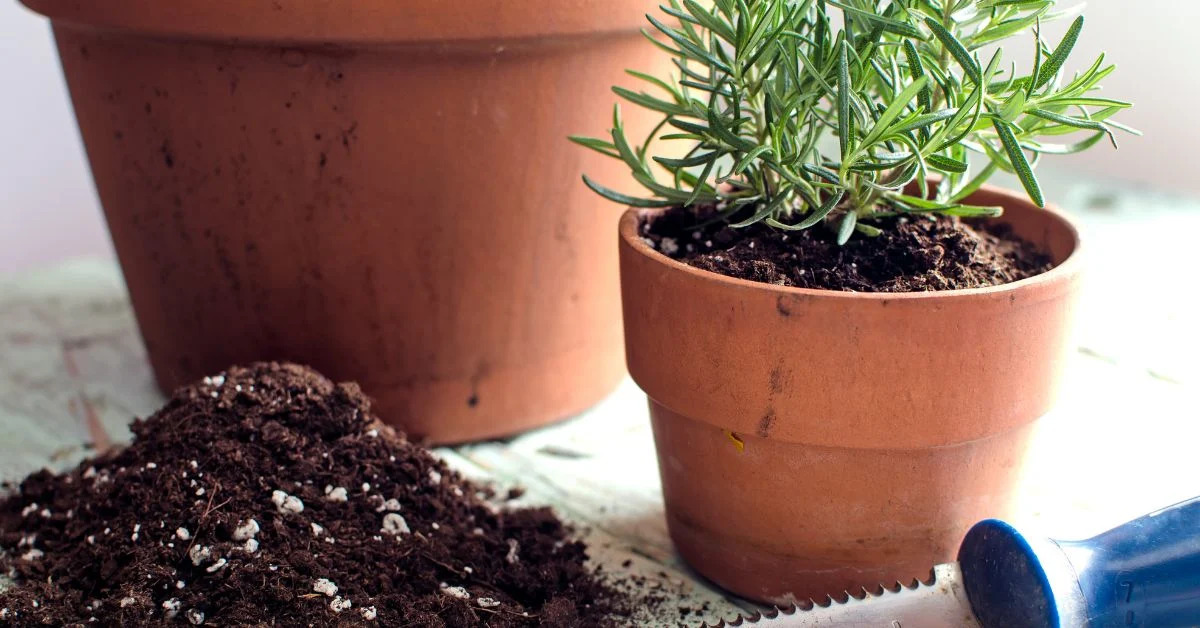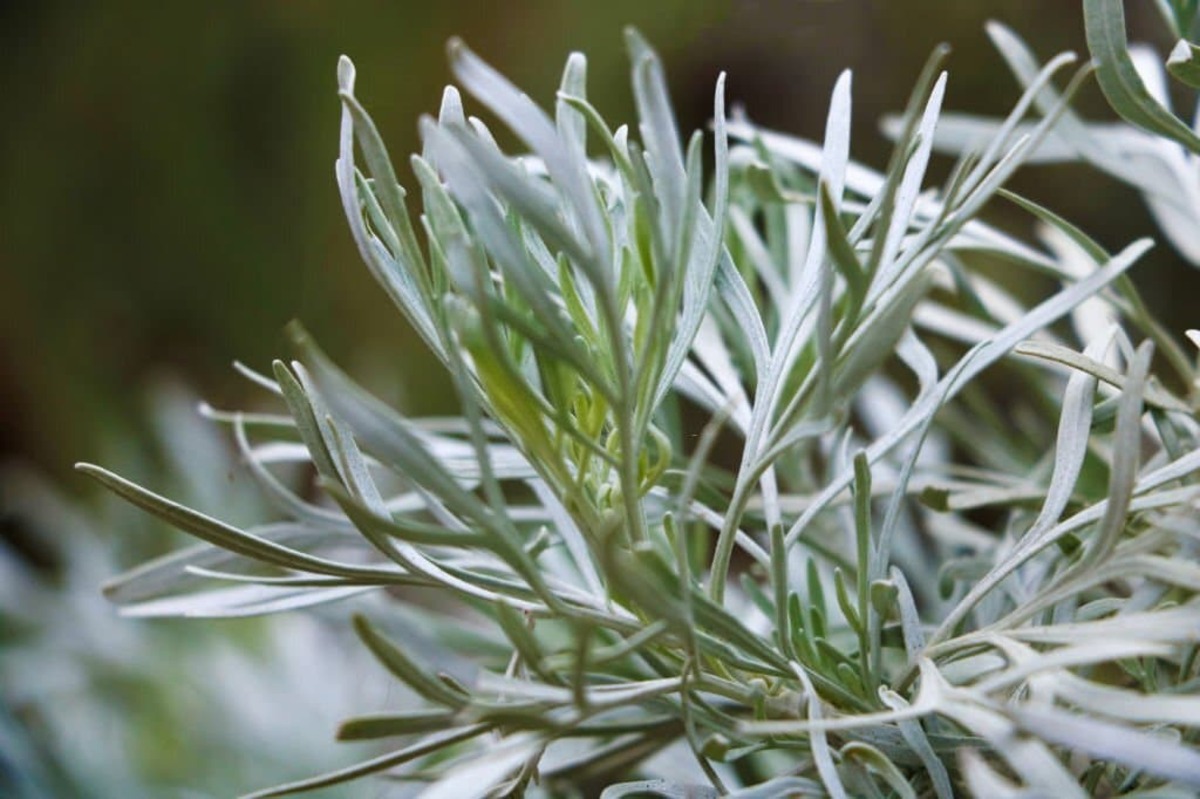Home>Gardening Basics>Understanding Soil>What Kind Of Soil Does Rosemary Like


Understanding Soil
What Kind Of Soil Does Rosemary Like
Modified: February 7, 2024
Discover the ideal soil for rosemary with our comprehensive guide. Learn the importance of understanding soil for successful rosemary cultivation.
(Many of the links in this article redirect to a specific reviewed product. Your purchase of these products through affiliate links helps to generate commission for Chicagolandgardening.com, at no extra cost. Learn more)
Table of Contents
Introduction
Introduction
Rosemary is a beloved herb known for its fragrant aroma and versatile culinary uses. Whether you are a seasoned gardener or just starting to explore the world of herbs, understanding the soil requirements for rosemary is essential for cultivating healthy and thriving plants. The ideal soil conditions play a pivotal role in the growth and development of rosemary, influencing its flavor, fragrance, and overall vitality. By delving into the specific soil preferences of rosemary, you can ensure that your herb garden yields an abundant supply of this aromatic herb.
As we embark on this exploration of soil and rosemary, it’s important to recognize that the success of your herb garden hinges on providing the optimal environment for your plants. Soil serves as the foundation for the growth of rosemary, impacting its ability to absorb nutrients, maintain proper moisture levels, and establish a robust root system. Through a deeper understanding of the relationship between soil and rosemary, you can harness this knowledge to create an environment where your plants can thrive.
Join us as we uncover the ideal soil conditions for rosemary, learn how to test and improve soil quality, and gain insights that will empower you to cultivate flourishing rosemary plants in your own garden. Let’s embark on this journey to unlock the secrets of soil that will elevate your rosemary-growing endeavors to new heights.
Understanding Rosemary
Rosemary (Rosmarinus officinalis) is a perennial herb that belongs to the mint family, Lamiaceae. Renowned for its aromatic foliage and delicate blue flowers, rosemary is a cherished addition to herb gardens and culinary landscapes. This versatile herb is celebrated for its culinary, medicinal, and ornamental properties, making it a valuable asset in any garden.
Native to the Mediterranean region, rosemary thrives in warm, sunny climates and well-drained soil. Its needle-like leaves exude a distinctive pine-like fragrance, adding a delightful aroma to any garden. Beyond its olfactory appeal, rosemary boasts a rich history of culinary use, where its robust flavor enhances a myriad of dishes, from roasted meats and vegetables to bread and sauces.
Aside from its culinary allure, rosemary has been revered for its medicinal properties for centuries. Its essential oils and active compounds are believed to possess antioxidant, anti-inflammatory, and antimicrobial properties, making it a popular ingredient in traditional medicine and aromatherapy.
Furthermore, rosemary’s ornamental charm makes it a sought-after plant for landscaping and decorative purposes. Its evergreen foliage and delicate blossoms add visual interest to gardens, while its hardy nature and low maintenance requirements make it an attractive choice for both novice and experienced gardeners.
Understanding the unique characteristics and preferences of rosemary is crucial for creating an environment conducive to its growth and vitality. By gaining insight into the specific needs of this beloved herb, you can tailor your gardening practices to ensure that your rosemary plants flourish and thrive.
Ideal Soil Conditions for Rosemary
Rosemary thrives in well-drained, moderately fertile soil with a slightly acidic to neutral pH. The ideal soil for rosemary is characterized by excellent drainage, which prevents waterlogging and ensures that the plant’s roots do not become waterlogged. This is crucial, as rosemary is susceptible to root rot in excessively moist conditions. Additionally, the soil should be rich in organic matter, providing essential nutrients while promoting a healthy microbial ecosystem.
When cultivating rosemary, it is beneficial to incorporate sandy or loamy soil with good aeration, allowing the roots to access oxygen while facilitating the drainage of excess water. The optimal pH range for rosemary falls between 6.0 and 7.0, although this herb can tolerate slightly alkaline conditions. Ensuring proper soil pH is essential, as it directly influences the plant’s ability to absorb nutrients from the soil.
Given rosemary’s Mediterranean origins, it thrives in locations with ample sunlight and warm temperatures. As such, the soil should be situated in a sunny, well-ventilated area to promote optimal growth. The combination of well-drained soil, adequate sunlight, and favorable temperatures creates an environment where rosemary can flourish, producing robust foliage and aromatic oils.
Understanding and implementing these ideal soil conditions for rosemary is pivotal for cultivating healthy, flavorful plants. By providing the appropriate soil environment, you can support the growth of vibrant rosemary plants that yield an abundance of fragrant foliage, enhancing your culinary endeavors and enlivening your garden with their ornamental charm.
Testing Soil for Rosemary
Testing the soil is a crucial step in ensuring that it meets the specific requirements for cultivating healthy rosemary plants. By conducting a soil test, you can assess key factors such as pH levels, nutrient content, and drainage capacity, allowing you to make informed decisions about soil preparation and amendment.
One of the primary considerations when testing soil for rosemary is the pH level. A soil pH test provides valuable insights into the acidity or alkalinity of the soil, guiding you in adjusting the pH to create an optimal environment for rosemary. Most plants, including rosemary, thrive in slightly acidic to neutral soil, making it essential to confirm that the pH falls within the recommended range.
Furthermore, evaluating the nutrient content of the soil is essential for understanding its fertility and identifying any deficiencies that may impact rosemary growth. Key nutrients such as nitrogen, phosphorus, and potassium play a vital role in supporting plant development, and a comprehensive soil test can reveal the availability of these essential elements. Based on the results, you can tailor your fertilization approach to supplement any lacking nutrients and promote the overall health of your rosemary plants.
Assessing the soil’s drainage capacity is another critical aspect of soil testing for rosemary. Since this herb thrives in well-drained soil, evaluating the rate at which water permeates the soil and the presence of any waterlogged areas can inform necessary adjustments to improve drainage and prevent potential issues such as root rot.
Conducting a soil test empowers you to make informed decisions about soil amendments, fertilization, and overall soil management, creating an environment that is conducive to the optimal growth of rosemary. By gaining a comprehensive understanding of the soil’s characteristics and making targeted adjustments based on the test results, you can establish an ideal foundation for cultivating thriving rosemary plants.
Improving Soil for Rosemary
Enhancing the soil to meet the specific requirements of rosemary involves strategic amendments and practices aimed at optimizing its texture, fertility, and drainage. By improving the soil, you can create an environment that supports the robust growth and vitality of your rosemary plants, ultimately yielding an abundant supply of aromatic foliage and enhancing the overall health of your garden.
One effective method for improving soil for rosemary is to incorporate organic matter, such as compost or well-rotted manure. Organic amendments enrich the soil with essential nutrients, improve its structure, and foster a thriving microbial community, enhancing the overall fertility and health of the soil. Additionally, organic matter aids in moisture retention while promoting aeration, creating an optimal environment for the development of healthy rosemary plants.
Adjusting the soil pH is another key aspect of soil improvement for rosemary. If the soil pH falls outside the recommended range, amendments such as elemental sulfur or agricultural lime can be used to modify the pH and create a more favorable environment for rosemary growth. By achieving the ideal pH level, you can optimize nutrient availability and ensure that your rosemary plants can effectively absorb essential elements from the soil.
Improving soil drainage is crucial for preventing waterlogging, a condition that can be detrimental to rosemary. Incorporating coarse materials such as perlite or coarse sand into the soil can enhance its drainage capacity, preventing excess moisture from accumulating around the plant’s roots. This promotes a healthy root system and reduces the risk of root rot, allowing your rosemary plants to thrive in well-aerated, well-drained soil.
Regularly monitoring the soil moisture levels and implementing appropriate watering practices is essential for maintaining an optimal soil environment for rosemary. By striking a balance between adequate moisture and proper drainage, you can create a stable soil ecosystem that supports the growth and development of vibrant rosemary plants.
By implementing these soil improvement strategies, you can create an environment that is tailored to the specific needs of rosemary, fostering the growth of healthy, aromatic plants that enrich your culinary pursuits and infuse your garden with their delightful fragrance and ornamental charm.
Conclusion
Understanding the intricate relationship between soil and rosemary is fundamental to cultivating thriving plants that yield an abundance of aromatic foliage and enrich your garden with their ornamental allure. By delving into the ideal soil conditions for rosemary, conducting soil tests, and implementing targeted soil improvement strategies, you can create an environment that supports the optimal growth and vitality of this beloved herb.
As you embark on your journey to nurture healthy rosemary plants, remember that the foundation of successful cultivation lies in providing well-drained, moderately fertile soil with a slightly acidic to neutral pH. These ideal soil conditions, coupled with ample sunlight and favorable temperatures, create an environment where rosemary can flourish, producing robust foliage and aromatic oils that elevate your culinary creations and enliven your garden.
Conducting soil tests empowers you to gain insights into the specific characteristics of your soil, allowing you to make informed decisions about soil amendments, fertilization, and overall soil management. By tailoring your approach based on the test results, you can address any deficiencies and create an optimal foundation for the growth of vibrant rosemary plants.
Furthermore, by implementing soil improvement strategies such as incorporating organic matter, adjusting the soil pH, and enhancing drainage, you can create an environment that is tailored to the specific needs of rosemary. This fosters the growth of healthy, aromatic plants that enrich your culinary pursuits and infuse your garden with their delightful fragrance and ornamental charm.
As you apply these insights to your gardening practices, you are poised to cultivate thriving rosemary plants that not only enhance your culinary endeavors with their flavorful foliage but also contribute to the visual and olfactory splendor of your garden. Embrace the art of nurturing the soil, and witness the bountiful rewards as your rosemary flourishes in an environment tailored to its unique preferences, enriching your garden and culinary experiences alike.






